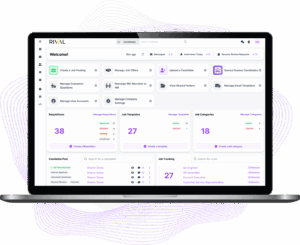What is an Applicant Tracking System (ATS)?
An applicant tracking system (ATS) is HR’s digital command center for hiring. It’s software designed to organize and streamline the recruiting process, from posting jobs to tracking candidates through interviews and offers. Instead of juggling spreadsheets, inboxes, and endless follow‑ups, an ATS centralizes it all in one place, helping HR and recruiting teams save time and reduce hiring headaches.
Modern ATS platforms, like Rival Recruit, have elevated the traditional ATS capabilities beyond simple resume collection. They offer AI-powered inbound and outbound recruitment capabilities, embedded talent data that can provide sourcing for internal moves, allow employee referrals for high-quality candidates, and workflows that give candidates themselves a smoother, more transparent experience.
In short, an ATS is HR’s digital backbone for faster, fairer, and more effective hiring.
What can an ATS be used for?
An ATS covers every major step of the recruiting journey. Common use cases include:
- Job posting distribution – Publish openings across job boards, career sites, and social channels with one click.
- Application management – Collect and organize candidate resumes and profiles in a single dashboard.
- Screening & filtering – Quickly surface qualified candidates with customizable filters and keyword searches.
- Collaboration tools – Enable recruiters, HR, and hiring managers to share notes, feedback, and next steps in real time.
- Interview scheduling – Automate coordination to cut back on email ping‑pong.
- Compliance tracking – Maintain records and audit trails to meet HR regulations and reporting standards.
- Analytics & reporting – Gain insight into time‑to‑hire, source effectiveness, and diversity metrics.
An ATS makes hiring more strategic by giving organizations the visibility and structure they need to attract, evaluate, and hire top talent at scale.
Benefits of Using an ATS
The right applicant tracking system (ATS) lightens the load on your recruiting team while giving candidates a clear, connected experience. Here are a few benefits you should expect from a good applicant tracking system:
- Time savings – Automate repetitive tasks like resume sorting and interview scheduling.
- Better collaboration – Keep hiring managers, recruiters, and HR aligned in one shared platform.
- Improved candidate experience – Ensure clear communication, timely follow‑ups, and a seamless application journey.
- Data‑driven decisions – Use reporting tools to see what’s working, spot bottlenecks, and optimize your recruiting strategy.
- Stronger compliance – Stay audit‑ready with consistent records and built‑in reporting features.
- Scalability – Support high‑volume hiring without losing track of candidate quality or fit.
When hiring is organized, efficient, and transparent, both candidates and companies win.
Example
An effective applicant tracking system (ATS) should do more than collect resumes. The best solutions bring structure, efficiency, and transparency to the entire hiring process. An ideal ATS typically includes:
- Broad job distribution to ensure openings reach the right candidates across boards, social platforms, and career sites.
- Streamlined communication tools that keep candidates engaged and reduce the risk of ghosting.
- Flexible workflows to match the unique recruiting process of your organization.
- Clear pipeline visibility through real‑time dashboards and reporting.
- Modular design so you can start small and scale as your hiring needs grow.
- Seamless integrations with HRIS, payroll, and other systems to create a connected HR tech ecosystem.
That’s the checklist. Now here’s the good news: Rival Recruit was built to deliver on every one of those points and more. Designed for today’s HR teams, Rival Recruit makes hiring simpler, smarter, and more people‑centered, so you can connect with top talent and make confident decisions. Here’s what that looks like:
Ready to see how it works? Take a tour of Rival Recruit.
Frequently Asked Questions
- Why should you use an Applicant Tracking System?
An ATS streamlines hiring by replacing manual, fragmented processes with a centralized platform. It saves recruiters time, keeps hiring managers aligned, and improves communication with candidates. With features like customizable workflows and real‑time dashboards, solutions (like Rival Recruit) help teams move faster and make more confident, people‑centered hiring decisions.
- What are the drawbacks of not using an Applicant Tracking System?
Without an ATS, hiring often means juggling spreadsheets, emails, and scattered notes. This slows down decision‑making, increases the risk of compliance issues, and makes it harder to deliver a smooth candidate experience. The result? Missed talent, longer time‑to‑hire, and frustrated hiring teams.
- How is an Applicant Tracking System different from a Candidate Portal?
A candidate portal is designed for applicants—it’s where they apply for jobs, upload documents, and check their status. An ATS is the behind‑the‑scenes system recruiters and HR teams use to manage those applications, track progress, and collaborate on decisions. Many modern ATS solutions connect directly with candidate portals for a seamless experience on both sides.
- Who manages an Applicant Tracking System?
Typically, HR and recruiting teams are the primary users of an ATS. However, hiring managers also log in to review applicants, share feedback, and track progress. Rival Recruit’s collaborative design ensures everyone involved has the access they need without unnecessary complexity.
- How does an ATS improve the candidate experience?
A modern ATS keeps candidates informed and engaged with timely updates, clear communication, and easy scheduling. Look for built‑in messaging tools to help reduce ghosting and ensure every candidate feels valued throughout the hiring journey.
- Is an ATS only for large companies?
Not at all. Today’s best ATS platforms are designed to scale. A modular design (such as with Rival Recruit) means you can start small, add features as your needs grow, and support everything from a handful of hires a year to enterprise‑level recruiting. Rival’s solution, for example, lets you use the full platform as an end-to-end ATS or to add outbound recruiting capabilities to your existing tech stack.
- How much does an Applicant Tracking System cost?
Pricing varies by provider, but the best systems offer flexibility. Be sure you’re paying for the capabilities you need so your ATS grows with you without adding unnecessary cost.
- Can an ATS help reduce bias in hiring?
Yes. Features like structured evaluation forms, consistent workflows, and anonymized screening options can reduce unconscious bias. A good ATS supports fairer hiring by giving teams the tools to focus on skills, qualifications, and fit — not just gut feel.
- How long does it take to implement an ATS?
Implementation depends on the size of your organization and the level of customization required. Cloud‑based systems are designed to get teams up and running quickly, with seamless integrations that minimize disruption.




















